Description
A Little Bit Sloppy but still Regal
The Codiaeum variegatum ‘Eleanor Roosevelt’, commonly known as the Croton ‘Eleanor Roosevelt’, is a distinctively elegant and colorful addition to any plant collection. This variety, originating from the tropical climates of Southeast Asia, Australia, and the Pacific Islands, is renowned for its slender and elongated leaves, which create a striking visual appeal.
The ‘Eleanor Roosevelt’ Croton displays a fascinating array of colors on its foliage. The leaves feature a blend of vibrant greens, yellows, reds, and even touches of orange, forming a radiant mosaic that changes with the plant’s age and lighting conditions. Each leaf is a unique piece of natural art, making this Croton a captivating focal point in any room.
Caring for your Croton
The Codiaeum variegatum, commonly known as the Croton plant, is a tropical evergreen shrub that’s revered for its eye-catching, multi-colored foliage. With leaves that boast an array of yellows, reds, greens, and purples, this plant serves as a living piece of art, enhancing the aesthetics of any indoor space. This guide will outline the essential care steps to ensure your Codiaeum variegatum not only survives but thrives.
Light
Light is perhaps the most critical factor affecting the color vibrancy of Codiaeum variegatum leaves. For the most brilliant display, place your plant in bright, indirect sunlight. Too much direct sun can scorch the leaves, while insufficient light will lead to dull, green foliage. If you’re using artificial lights, fluorescent tubes or specialized grow lights work well.
Water
Overwatering or underwatering can quickly become a problem with Codiaeum variegatum. These plants like their soil to be consistently moist but not waterlogged. Allow the top inch of soil to dry out before watering again. Reduce the frequency in winter months when the plant’s growth slows down. Always use well-draining soil and a pot with drainage holes to prevent root rot.
Being a tropical plant, Codiaeum variegatum loves a humid environment. Aim for a humidity level of at least 40-60%. You can increase humidity around the plant using a pebble tray filled with water or a room humidifier. Misting the leaves can also help but do this sparingly to avoid leaf fungal problems.
Fertilization
During the growing season (spring through early fall), fertilize every 6-8 weeks using a balanced, liquid fertilizer diluted to half the recommended strength. Always water the plant before applying fertilizer to avoid root burn. In the late fall and winter, refrain from fertilizing as the plant goes into a dormant period.
Pruning
Regular pruning helps maintain the shape and size of your Codiaeum variegatum. Prune in the spring before the growing season begins, cutting back any long or leggy stems to encourage bushier growth. Always use clean, sharp scissors or pruning shears. You can propagate the cuttings, but be cautious, as the plant’s sap can be irritating to the skin.
Pests and Diseases
Codiaeum variegatum is generally resilient but can be susceptible to common houseplant pests like spider mites, mealybugs, and scale. Inspect your plant regularly and treat infestations early with insecticidal soap or neem oil. Overwatering can lead to root rot, so always ensure that your plant has proper drainage.
Repotting
Repot your Codiaeum variegatum every 1-2 years or when you notice that the root system has become cramped. Choose a pot that is 1-2 inches larger in diameter than the current one. Use a well-draining potting mix, ideally one formulated for tropical houseplants. Take care to gently loosen the root ball when transferring your plant.
Toxicity
It’s crucial to note that Codiaeum variegatum is toxic to pets when ingested. The plant contains compounds that can cause gastrointestinal distress, so it’s best to keep it out of reach of dogs, cats, and small children.

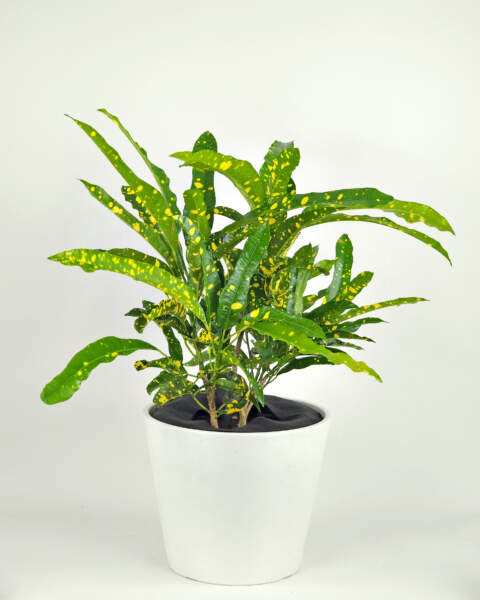
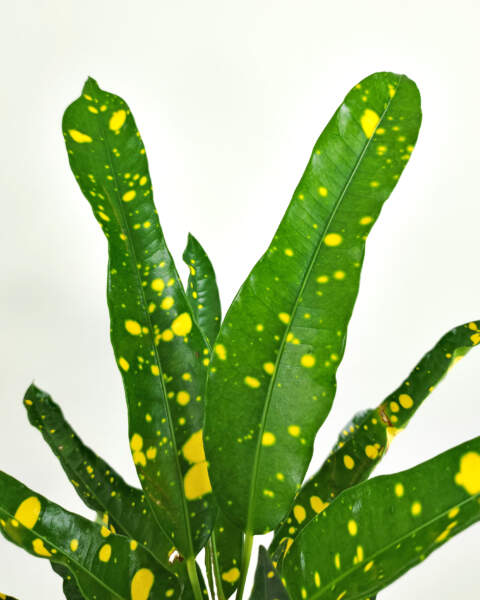

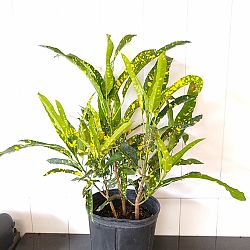
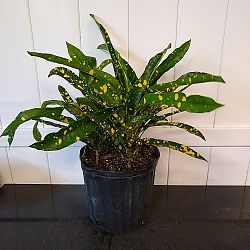
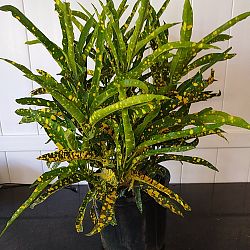
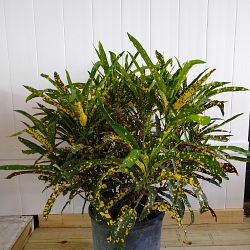
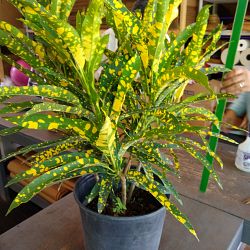

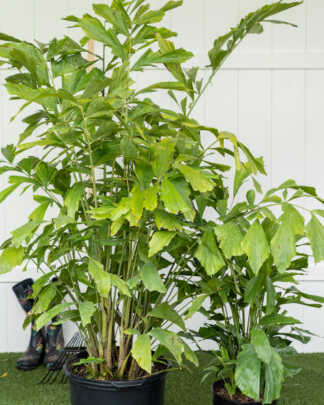
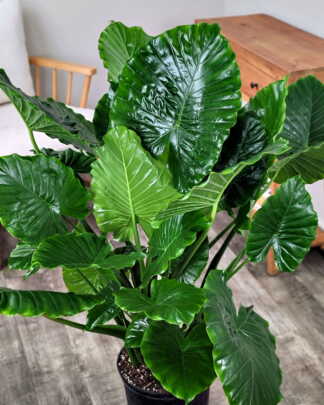

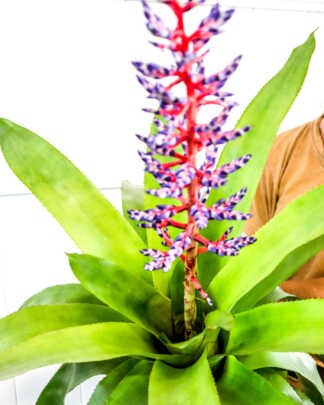
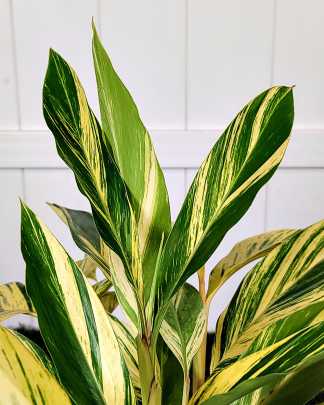


Bhanmattie S. (verified owner) –
plant came just as shown in pick very fresh and neatly package